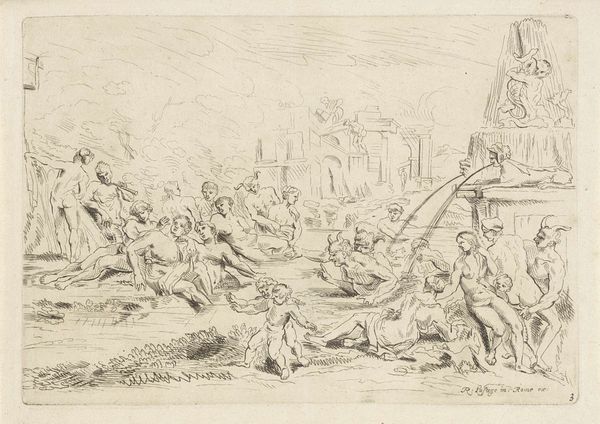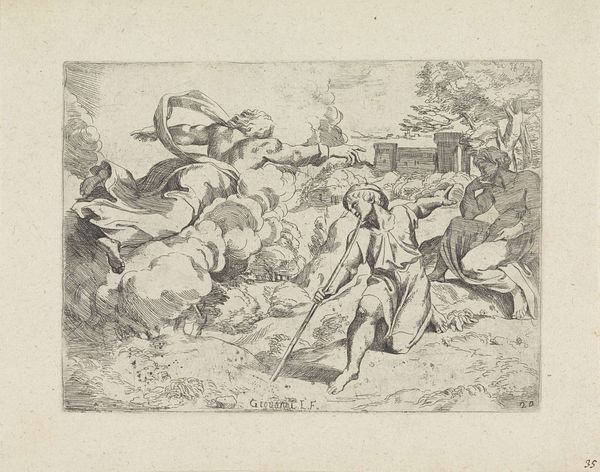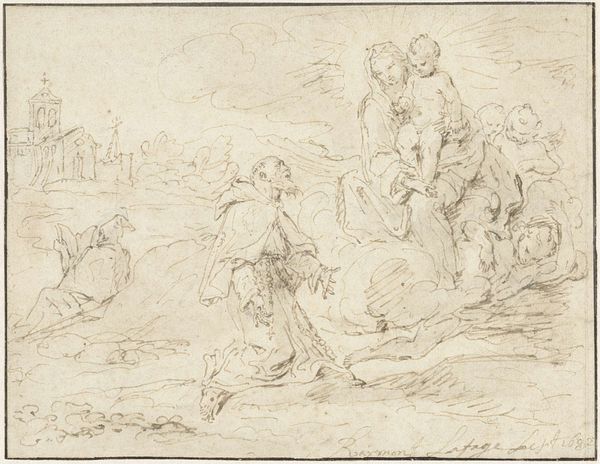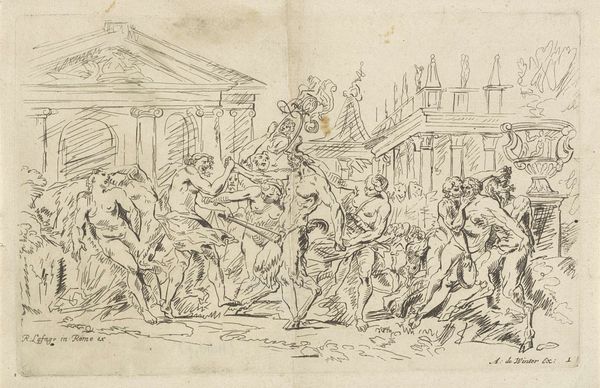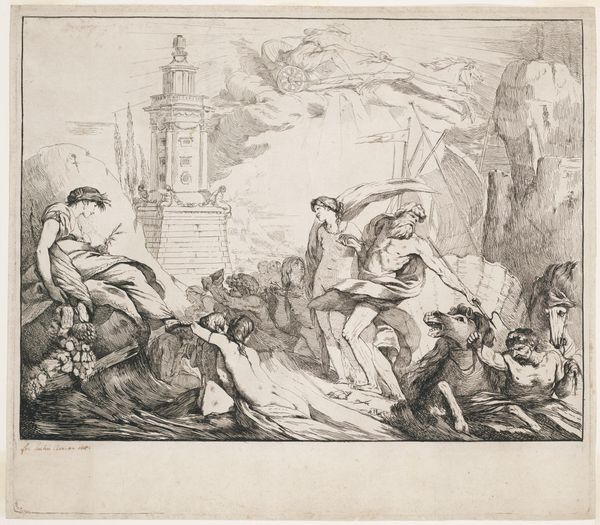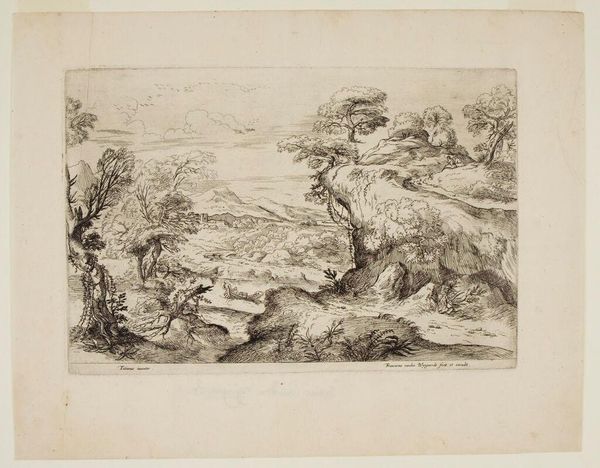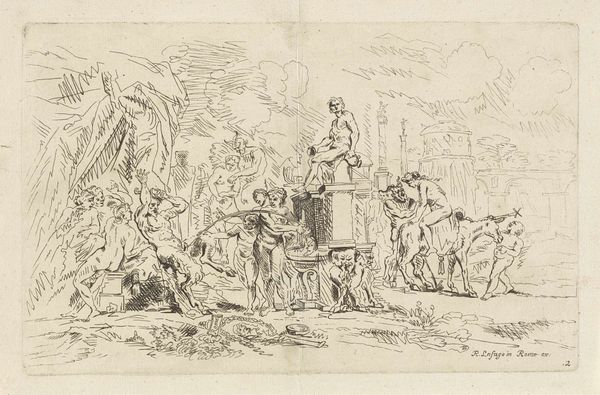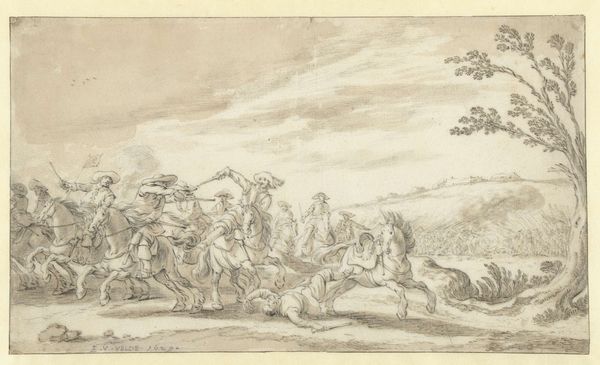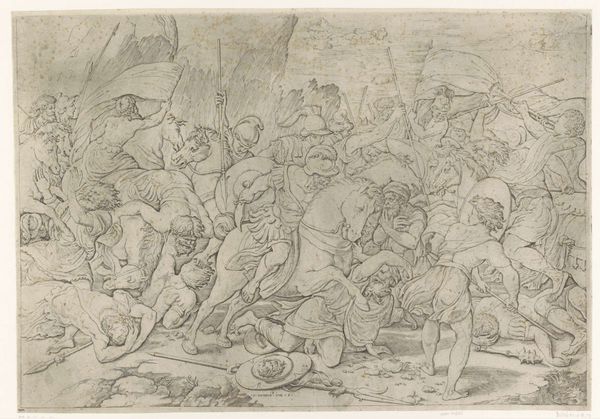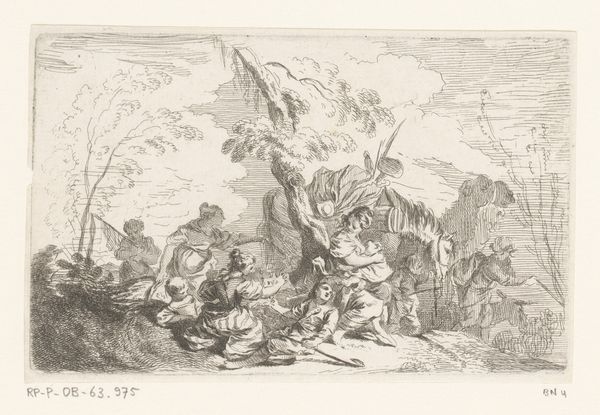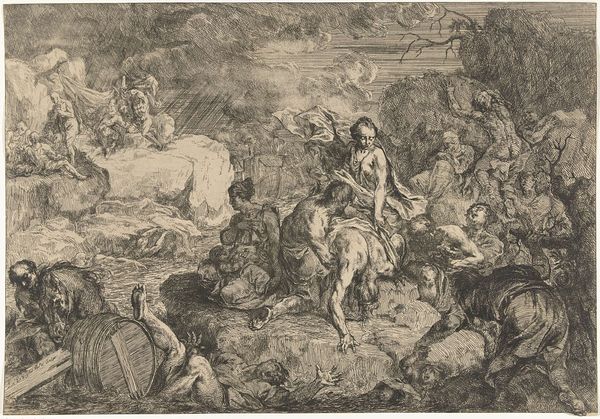
drawing, ink
#
drawing
#
ink drawing
#
baroque
#
pen sketch
#
pencil sketch
#
landscape
#
figuration
#
ink
#
genre-painting
#
nude
Dimensions: height 152 mm, width 239 mm
Copyright: Rijks Museum: Open Domain
Curator: I’m struck by the looseness of the line, the way the figures seem to melt into the landscape. It’s hedonistic, chaotic, and dreamy all at once. Editor: What we’re looking at is “Nymphs and Satyrs Before a Temple of Bacchus,” an ink drawing by Anthonie de Winter, likely executed between 1668 and 1707. It's currently held at the Rijksmuseum. Curator: Bacchus, of course, god of wine, revelry, and liberation. Seeing his temple perched above this scene of unbridled play—it feels like an endorsement, doesn’t it? Are these really carefree nymphs, or are we seeing a deeper power dynamic? Editor: Bacchus and his entourage represent not just freedom but the overturning of societal norms. Satyrs are liminal creatures, neither fully human nor animal, embodying desires society usually represses. Note the temple, though: classic design evoking enduring ideals and a connection to ancient rituals that are about continuity. Curator: Continuity, or co-option? I can’t help but read this through a postcolonial lens. The nymphs and satyrs are stripped bare—quite literally—under the distant, dominating gaze of a classically "civilized" structure. What price this liberation, when framed by the colonizing force of classicism? Editor: I understand that viewpoint. But Bacchus wasn’t imposed, his cult was absorbed from Greek religion. Consider the staff held by the figure atop the temple – it could represent authority, but equally the creative potency granted by Bacchus' revels, and so hints at a possible reading of renewal rather than conquest. Curator: Perhaps. The artist's choice of medium, though – humble ink, a drawing rather than a grand oil painting – tempers the message. It allows for fluidity, incompleteness, even a questioning of its own ideals. Maybe that's why this "pen sketch" intrigues so. It leaves space for interpretation, for challenging those potentially oppressive structures. Editor: I agree. It gives room to explore those hidden symbols in ourselves. Looking closer helps bring old understandings into the present and that is why “Nymphs and Satyrs Before a Temple of Bacchus" will keep rewarding scrutiny.
Comments
No comments
Be the first to comment and join the conversation on the ultimate creative platform.
